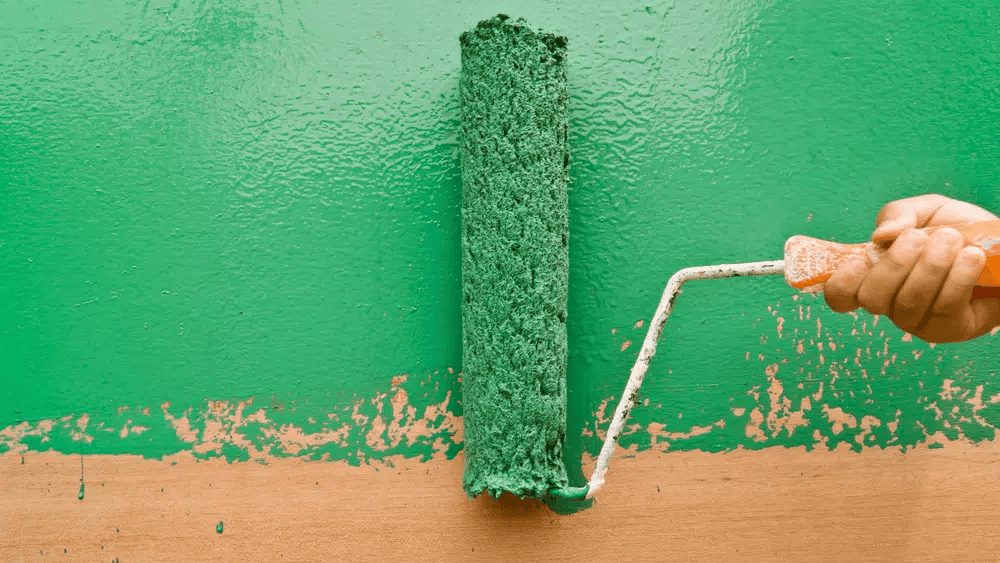Keywords: efflorescence, HOA, property manager, fine white powder, removal
Recently, an HOA property manager asked us to come out to inspect a wall we painted a few months earlier. We discovered that our beautifully painted wall was covered with a fine white powder. Efflorescence! The property manager was unfamiliar with the problem and had assumed that our paint was failing.
Efflorescence is a fine, white, powdery deposit of water-soluble salts left on the surface of masonry as the water in the wall or floor evaporates. The formation of these deposits come from the salts which occur in the manufacturing process of concrete products and from exposure to salt-bearing groundwater or tap water used in watering grass and shrubs. The salts are transported through the concrete by moisture. Once the moisture reaches the surface, it evaporates and leaves the salt residue.
Groundwater moves into building foundations, floors, and walls by capillary action, or wicking upwards into masonry, stucco, or concrete, which is very often the cause of efflorescence. Also, irrigation and sprinklers can be the source of water causing the efflorescence.
Most concrete masonry is somewhat porous. This includes concrete block walls and stucco walls, as well as patios and floors made from concrete products. In a dry and hot Arizona climate, evaporation of the salt bearing water usually takes place before reaching the surface. This leaves the salts below the surface where they do not show. But when the humidity is high and water evaporation is slower, there is more opportunity for salts to reach the surface and for efflorescence to grow.
Removal of Efflorescence
There are several methods for the removal of efflorescence. If the problem is identified early, efflorescence can often be removed with a stiff bristle brush. Over time, the deposit will become harder. A high-pressure wash with a power washer should remove the efflorescence.
If the problem persists, the application of a mild acid solution will do the trick. These acids might include vinegar, muriatic acid, or even citric acid. Most hardware and home improvement stores carry acid-based products. Here is a link to Amazon.com (Amazon.com : efflorescence remover). Be careful to follow instructions and safety precautions on the product label.
Prevention of Efflorescence
Unfortunately, very few measures can be taken to prevent efflorescence after the fact. On new construction, vapor barriers can avert the movement of moisture from the groundwater to the surface of the concrete. The application of sealers and waterproofing coatings have proven to be the best method to prevent water-soluble salts from penetrating the concrete surface.
In our dry Phoenix climate, rainwater will ordinarily evaporate quickly, so rain is usually not a problem. With old construction, avoid planting shrubs against the house wall or fencing. Aim sprinklers away from the walls and fences. Avoid overwatering. That brings us back to the story at the beginning of this article. We peered over the stucco block wall that had a new bloom of efflorescence. We saw a lush green lawn bordered by a variety of lovely flowering shrubs, and clear evidence of water marks high on the wall from the sprinkler system. There was the culprit! We recommended the property manager instruct the resident to adjust his sprinklers and invest in a good stiff brush.
Perhaps your HOA perimeter walls are covered with efflorescence, or the stucco is peeling badly. Let us MTS Painting give you a free estimate. We can make your walls look like new.



